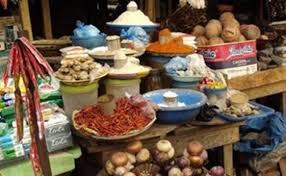Global Food Commodity Prices Rebound In June — Economic Confidential
Global Food Commodity Prices Rebound In June
In June, global food commodity prices rose for the first time since the beginning of the year, driven by a rebound in vegetable oils, sugar, and dairy quotations. However, in the cereals and meat markets, most prices remained under downward pressure amid market uncertainties posed by the COVID-19 pandemic.
Food Price Index (FPI), which tracks international prices of the most traded food commodities, published by the Food and Agriculture Organisation (FAO) Food Outlook, averaged 93.2 points in June, some 2.4 per cent higher than the previous month.
According to the report, effective this July, the price coverage of the FPI was expanded and its base period revised from 2002-2004 to 2014-2016.
The FAO Vegetable Oil Price Index gained 11.3 per cent in June, after declining for four consecutive months. The rebound reflects a sharp rise in palm oil prices due to recovering global import demand, following the easing of COVID-19-related lockdowns in a number of countries, and concerns over possible production setbacks amid prolonged migrant labour shortages.
Price quotations of soy, sunflower, and rapeseed oils also spiked, while the FAO Sugar Price Index climbed 10.6 per cent in June from the previous month. The surge in crude oil prices provided strong support to sugar markets, encouraging Brazil’s sugar mills to use more sugarcane supplies to produce ethanol instead of sugar, thereby affecting sugar export availability and prices.
The FAO Dairy Price Index rose by 4.0 per cent from May, marking the first increase after four months of successive declines. Renewed import demand for spot supplies, especially from the Middle East and East Asia, coupled with seasonally declining supplies in Europe, and limited availability of uncommitted supplies in Oceania, underpinned the recent price increases.
The FAO Cereal Price Index declined 0.6 per cent from May. Downward pressure on wheat prices in June was in part due to new harvests in the northern hemisphere and improved production prospects in a number of major exporting countries, including the Black Sea region.
The FAO Meat Price Index fell 0.6 per cent from May, averaging 6.0 per cent below its June 2019 value. Bovine meat and poultry price quotations fell, largely due to increased export availability in major producing regions, whereas pig meat prices registered a small increase, mostly in Europe, on the expectation of the further easing of COVID-19 market restrictions.
It is projected that global cereal production would boost stocks as the world cereal production is poised to reach a new record level of 2 790 million tonnes in 2020, up by 9.3 million tonnes from the May forecast, surpassing the high record registered in 2019 by 3.0 per cent, according to FAO’s Cereal Supply and Demand Brief, released last week.
The forecast of world coarse grains production in 2020 has also been revised up to 1 519 million tonnes, up by 5.7 million tonnes from the previous month, reflecting expectations of larger outputs of barley in Australia, the European Union and Turkey.
FAO’s global rice production forecast for 2020 is now pegged at 509.2 million tonnes, 400,000 tonnes above June’s figure, primarily reflecting improved prospects for South American countries, where conducive weather raised yield expectations to all-time-highs.
World cereal utilisation in the year ahead is forecast to rise to 2 735 million tonnes, 1.6 per cent up from the previous month’s forecast, mostly driven by an upturn in feed and industrial uses of coarse grains compared to earlier expectations.
World rice utilisation is also predicted to reach a fresh peak of 510.4 million tonnes in 2020/21, 1.6 per cent up from June, based on expanding food use.
Reflecting new production and consumption forecasts, FAO now expects world cereal stocks by the end of seasons in 2021 to reach 929 million tonnes, representing a robust year-on-year expansion of 6.0 per cent.
This would drive the global cereal stock-to-use ratio in 2020/21 to a 20-year high of 33.0 per cent, highlighting the comfortable global supply prospects in the new season.
While conflicts and weather shocks remain critical factors underpinning the high levels of severe food insecurity in countries requiring external assistance for food, the COVID-19 pandemic is also having wide-ranging and severe effects, particularly through the loss of income, according to the quarterly Crop Prospects and Food Situation report, also published yesterday.
Despite these issues, the global cereal harvest is on track for growth in all regions, except for Europe. Cereal production in Africa in 2020 is projected to increase by 1.0 per cent, although declines are expected in northern, western, and central regions of the continent.
FAO’s forecast for the aggregate cereal output of Low-Income Food-Deficit Countries in the 2020/21 season stands at 492.7 million tonnes, which is 6.0 per cent above the average and would mark a fifth consecutive annual production increase.
However, populations are growing even faster and the overall cereal import requirement for LIFDCs is estimated at 73.4 million tonnes, up around five per cent from the previous year, which also reflects production downturns in several countries.
The report also listed 44 countries in the need of external food assistance, amongst which Nigeria and 33 other African countries were included.The countries are Afghanistan, Bangladesh, Burkina Faso, Burundi, Cabo Verde, Cameroon, Central African Republic, Chad, Congo, Democratic People’s Republic of Korea, Democratic Republic of Congo, Djibouti, Eritrea, Eswatini, Ethiopia, Guinea, Haiti, Iraq, and Kenya.
Others include Lesotho, Liberia, Libya, Madagascar, Malawi, Mali, Mauritania, Mozambique, Myanmar, Namibia, Niger, Nigeria, Pakistan, Senegal, Sierra Leone, Somalia, South Sudan, Sudan, Syrian Arab Republic, Tanzania, Uganda, Venezuela, Yemen, Zambia, and Zimbabwe.





